
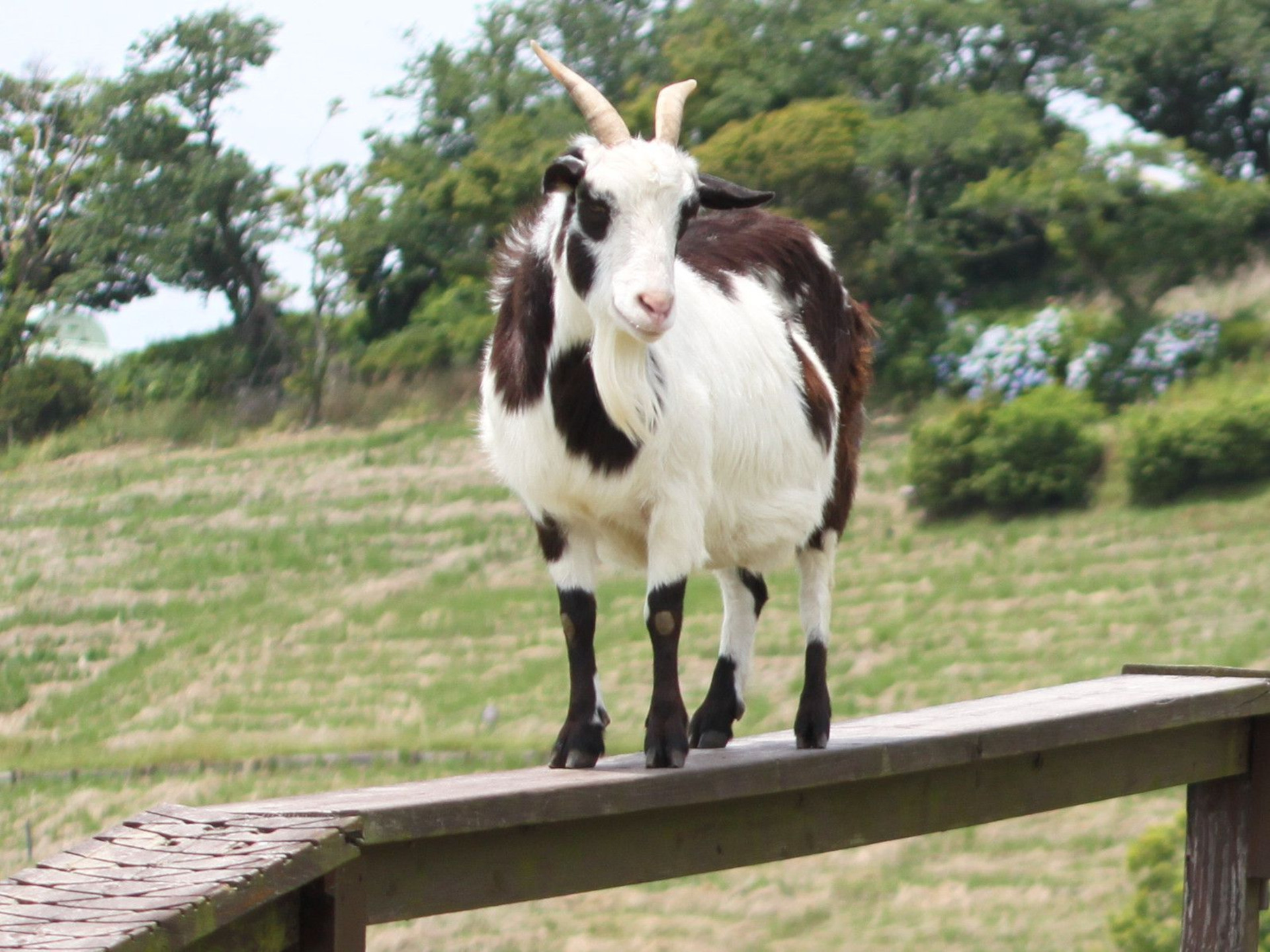
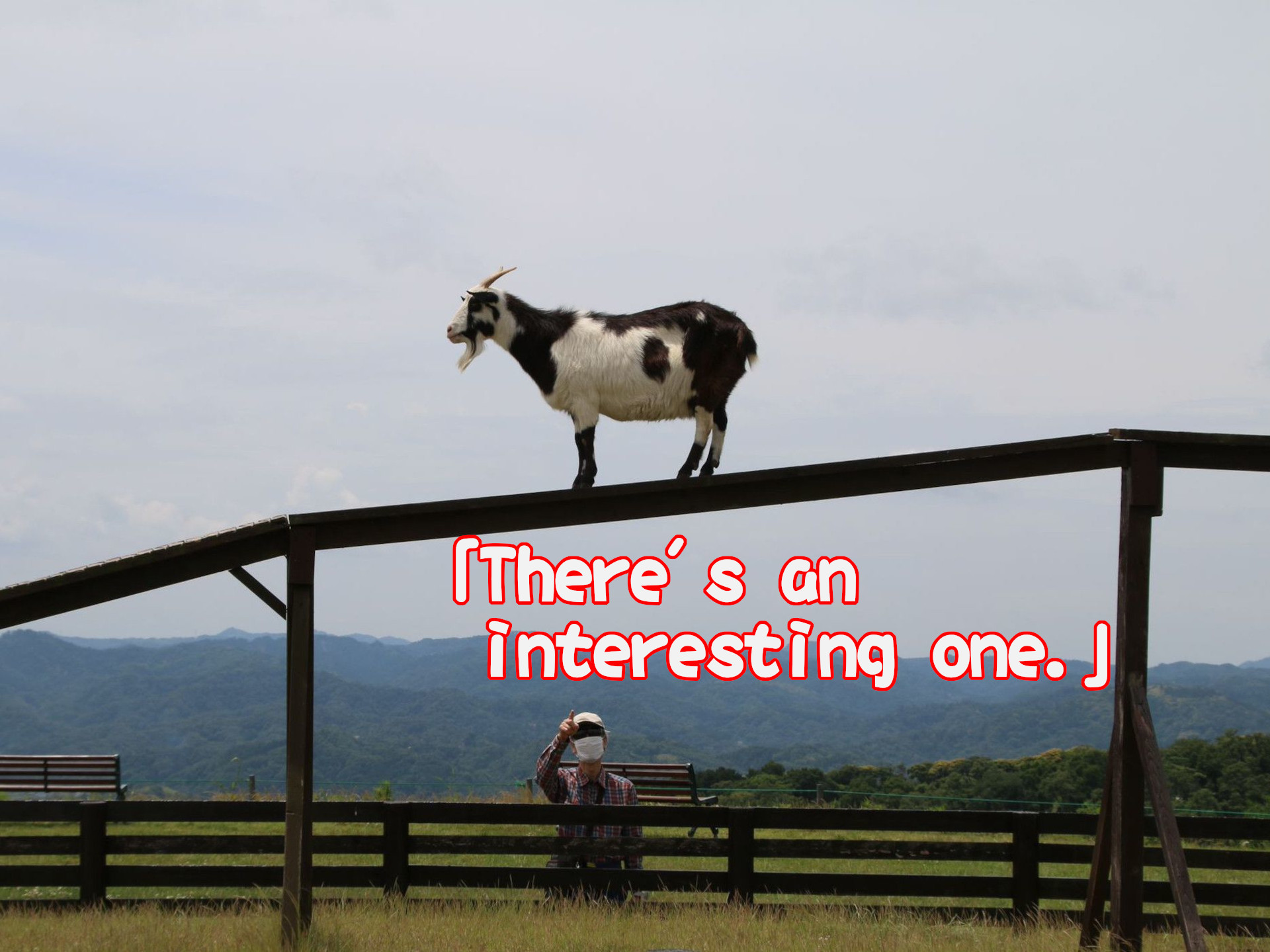
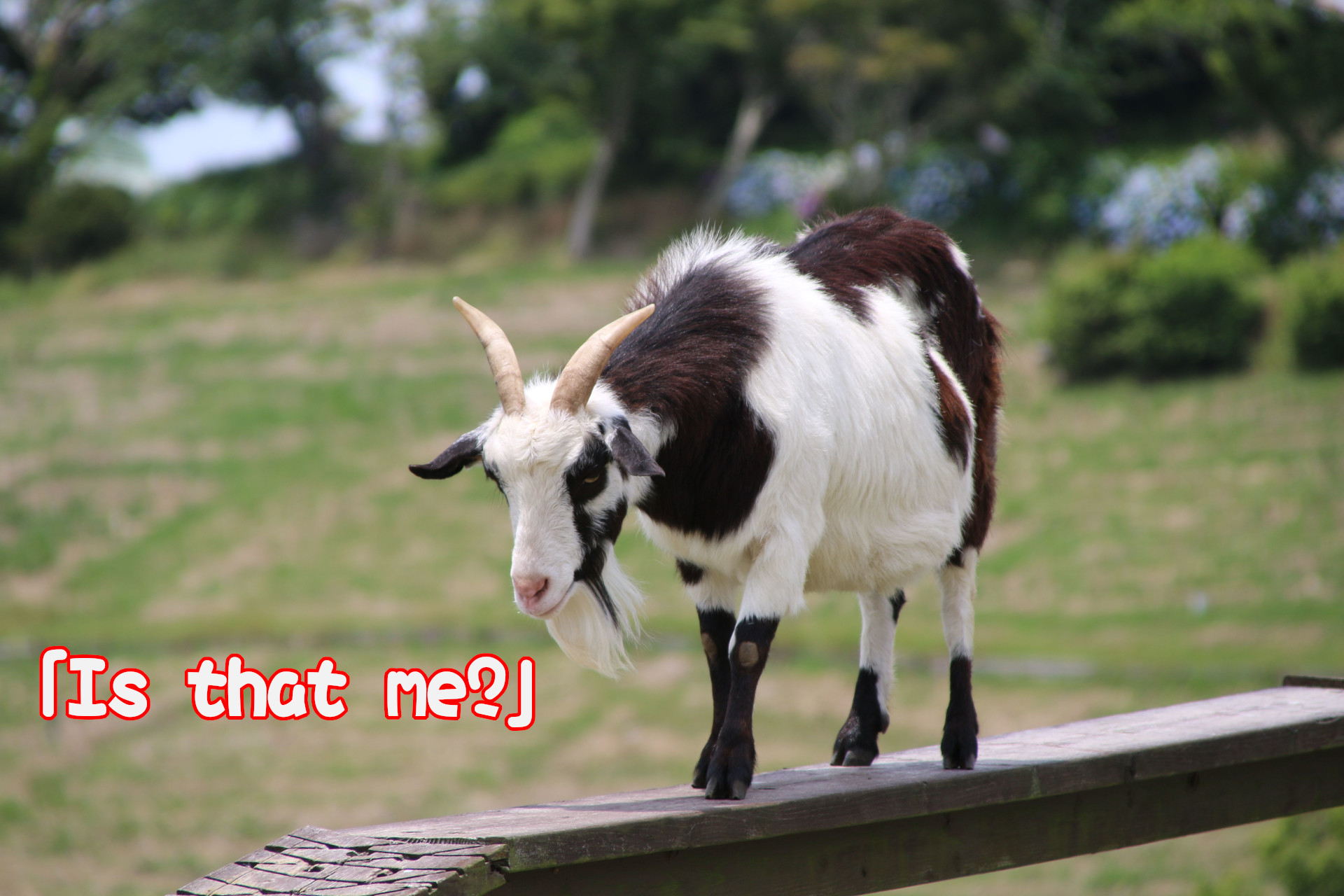
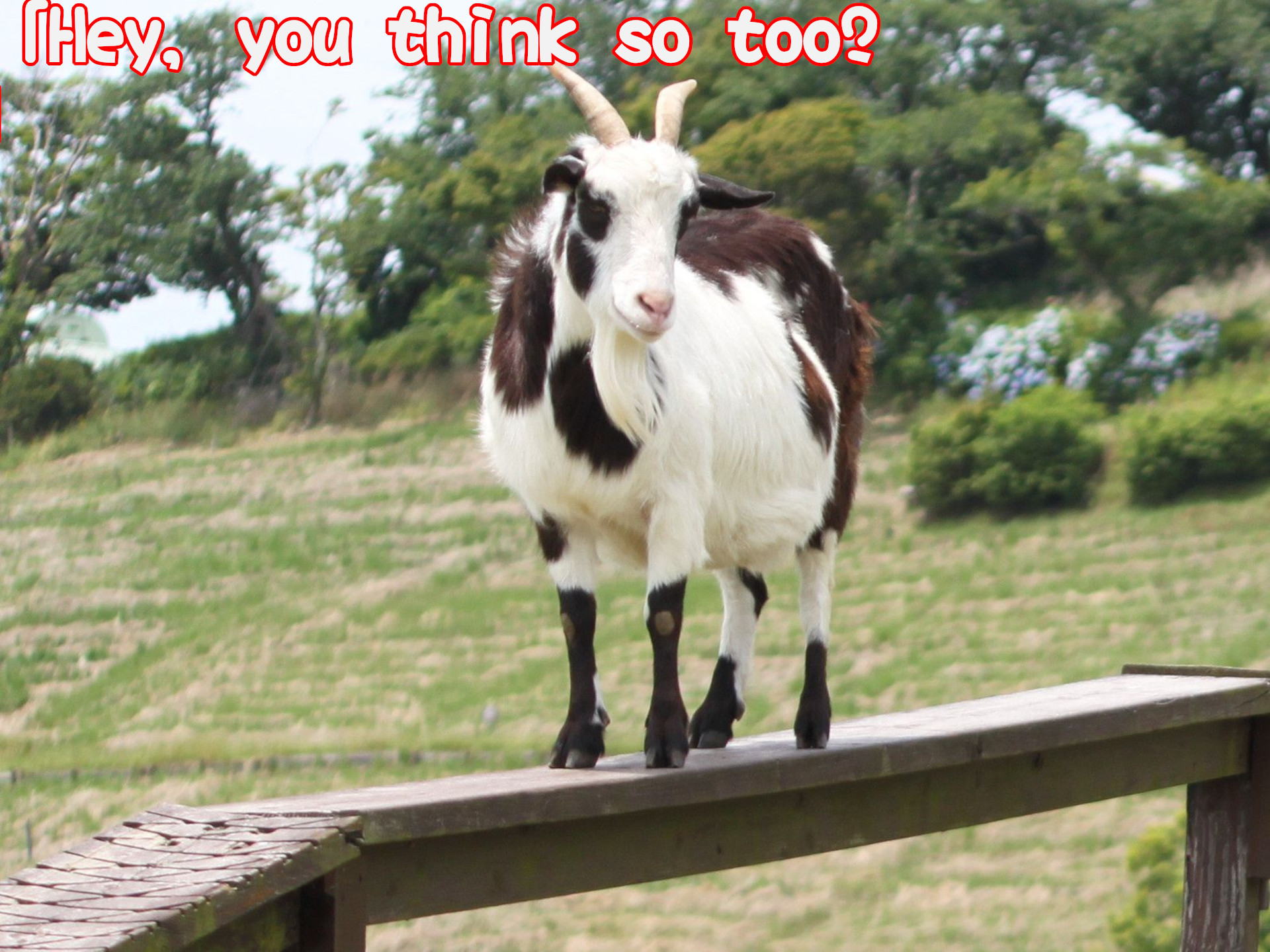
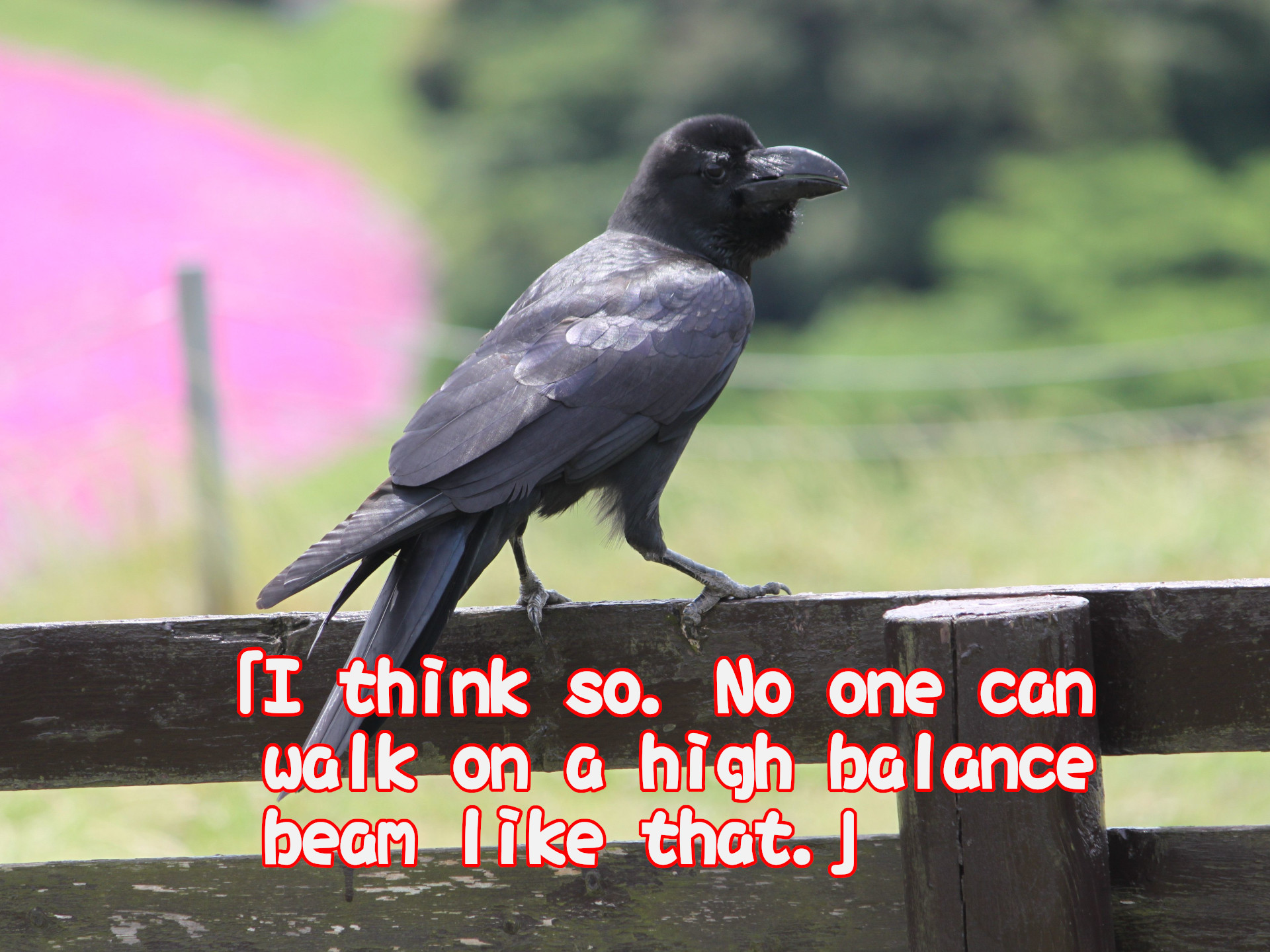

「I will show the beautiful landing. You can’t miss it!」
撮影協力:マザー牧場
Answer:Goat
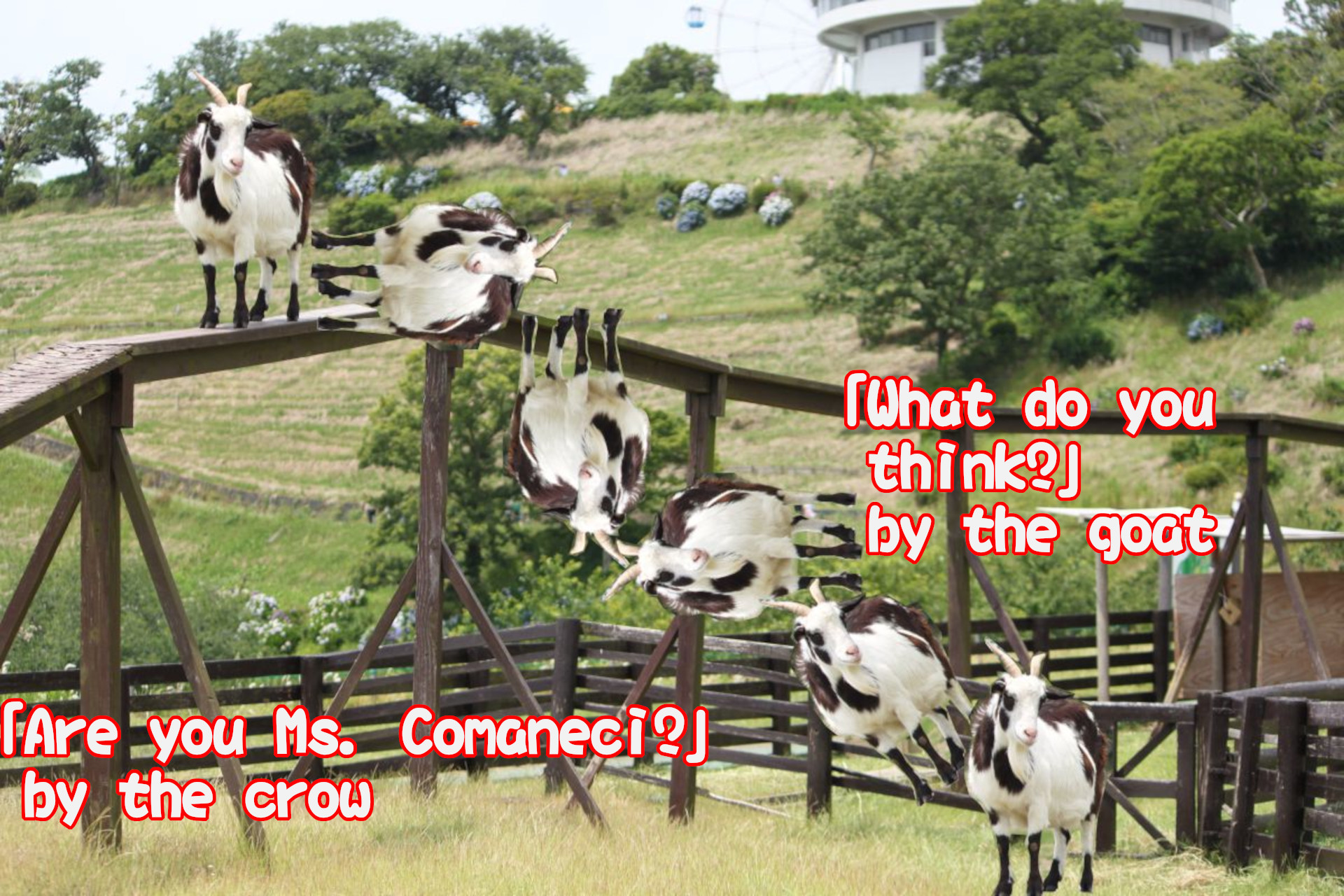
The goat is an animal of the even-toed ungulates family Bovidae. Some males have long beards like old men. Some species have horns, while others do not.
They are herbivores that feed on grasses such as rice and wheat straw, and have four ruminant stomachs, which is unique to the bovine family. There are several types of species, including dairy breeds, which are used to make dairy products such as cheese and yogurt; meat breeds, which are used to make goat meat; hair breeds, which are used to make mohair (angora) and knit products (cashmere); hide breeds, which are used to make leather products such as gloves; and meat breeds, which are used for both dairy and meat production. In Japan, beef, pork, and chicken are the main types of animal meat, while goat is a specialty of Okinawa and sheep of Hokkaido. The goat used in Okinawan cuisine is the Tokara goat, a meat breed, and the goat dish is called hija. Typical goat dishes include sashimi and goat soup.
In Japan, goats raised for dairy are mostly zaanen, which have a white body surface color. In some zoos, Yakushima goats, which are brown in color and about half the size of a normal goat, are exhibited in the petting zoo. On uninhabited islands and in places where people have been unable to take care of them, goats have become wild and have eaten up the surface of the mountains, which has become a problem.
Common name: Goat ,Scientific name: Capra Linnaeus, Synonyms: Capra aegagrus hircus, Place of origin: Mediterranean coast (wild goat) , Distribution: Eurasia – Africa Environment: Arid zone Horns: both sexes have blood-bearing horns (some do not) Beards: both sexes have beards Ears: can hear well Hoofs: 2 on each foot (even-toed ungulates) Number of stomachs: 4, Eyes: rectangular iris on each side of face with wide range of vision Body surface color: white (zygote) , Body Color: White (Saanen, Angora), brown (Toggenburg), dark brown (Toggenburg), black (Manber), black spots on white (Jamnabari) , Diet: Herbivorous, including grass, weeds, vegetable waste, and bran, Breeding Method: Viviparous Estrus: Fall Gestation, Period: 6 months, Estrus Cycle: 3 weeks Female in a single litter, Lifespan: 10-15 years, Call: bleat.
